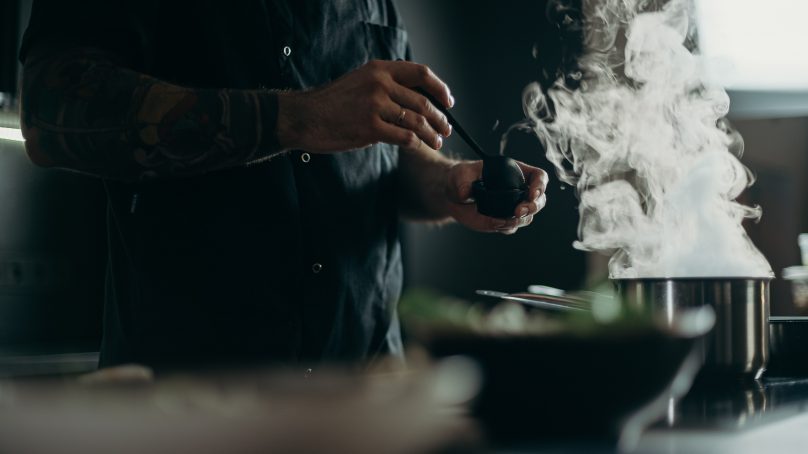
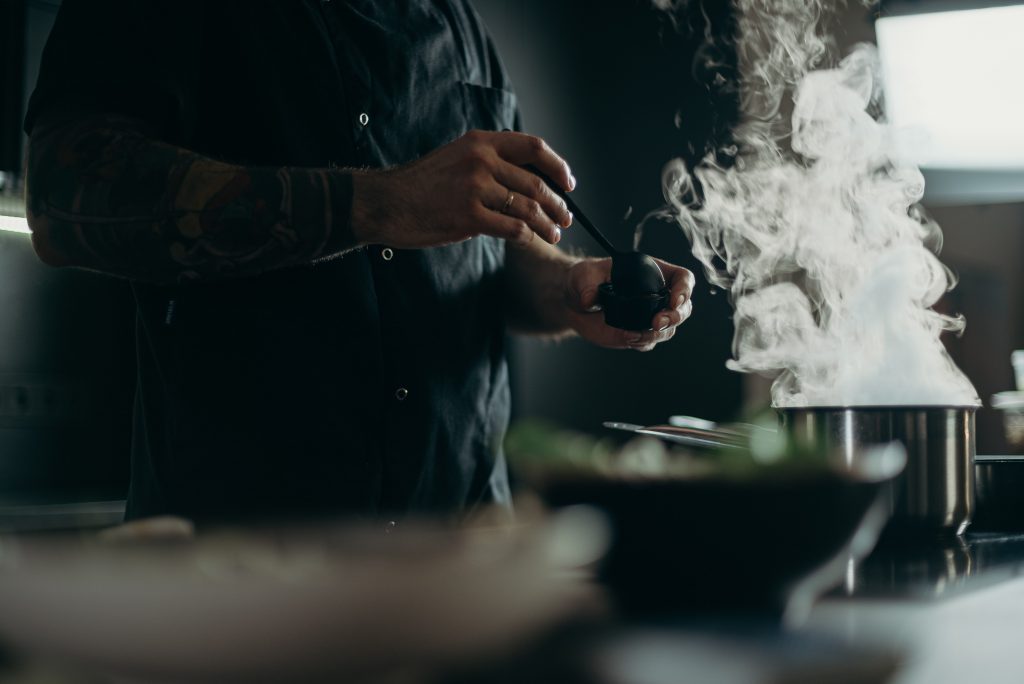 According to a virtual webinar presented by Euromonitor’s Global Food and Beverage Lead Michael Schaefer, ghost kitchens, or cooking facilities that produce food only for delivery with no dine-in or customer facing areas, could create a USD 1 trillion global opportunity by 2030. The firm predicts cheaper, faster and more reliable delivery could help this segment capture 50 percent of the drive-thru service (USD 75 billion), 50 percent of takeaway foodservice (USD 250 billion), 35 percent of ready meals (USD40 billion), 30 percent of packaged cooking ingredients (USD 100 billion), 25 percent of dine-in foodservice (USD 450 billion), and 15 percent of packaged snacks (USD 125 billion).
According to a virtual webinar presented by Euromonitor’s Global Food and Beverage Lead Michael Schaefer, ghost kitchens, or cooking facilities that produce food only for delivery with no dine-in or customer facing areas, could create a USD 1 trillion global opportunity by 2030. The firm predicts cheaper, faster and more reliable delivery could help this segment capture 50 percent of the drive-thru service (USD 75 billion), 50 percent of takeaway foodservice (USD 250 billion), 35 percent of ready meals (USD40 billion), 30 percent of packaged cooking ingredients (USD 100 billion), 25 percent of dine-in foodservice (USD 450 billion), and 15 percent of packaged snacks (USD 125 billion).
Following the article we had already published about the topic a few weeks earlier, HN spoke with leading ghost kitchen, or kitchen as a service (KaaS) providers in the MENA to understand this business’ scheme and the opportunities to tap into our region.
Business case: Kitopi
Kitopi is a managed cloud kitchen platform that partners with restaurants to help them scale beyond borders in 14 days. The company does this by offering restaurants the ability to plug their recipes into our network of delivery-only kitchens, that are located in high demand areas, and built for speed and efficiency. In addition to this, Kitopi caters to the entire customer experience journey – from the supply chain, call center to delivery, allowing restaurant owners to focus on running their dine-in space, marketing and menu development. A large part of Kitopi’s competitive advantage is due to their in-house suite of applications, better known as SKOS (which stands for Smart Kitchen Operating System) – which optimizes all aspects of kitchen operations in real-time to maximize efficiency and increase utilization. It’s an in-house suite of productivity and collaboration applications for cloud kitchens and the first of its kind technology in the region that has been built specifically for cloud kitchens. Thanks to this technology and Kitopi’s extensive world-class supply chain, the company has also recently started to expand its services by building complementary solutions in the food space, including groceries, meal plans, and catering.
Costs vs profits
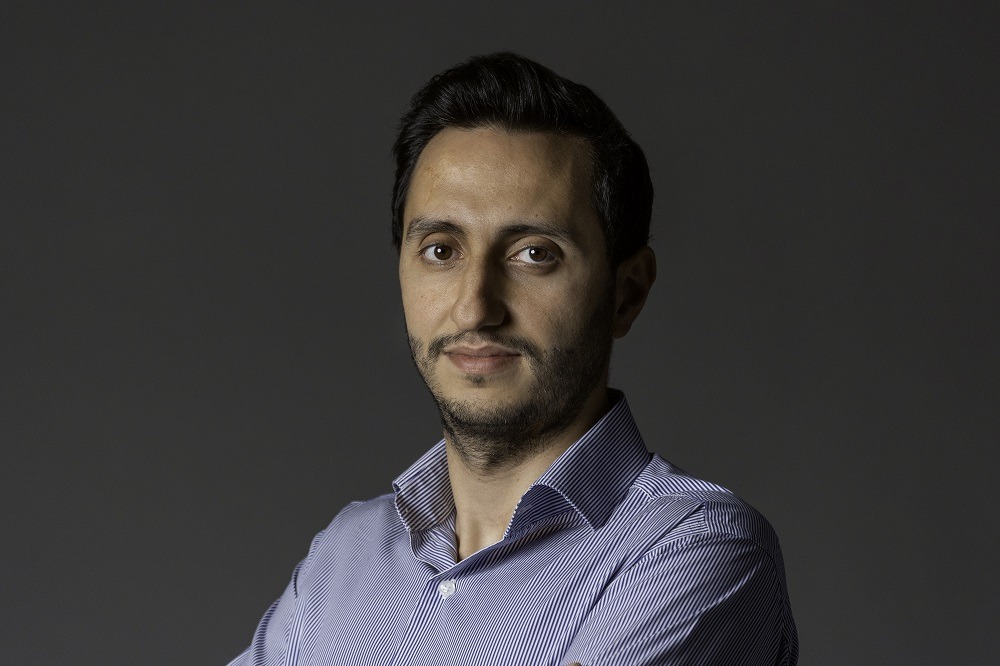
Jihad Bou Nasr
Jihad Bou Nasr, country manager of UAE explained to HN that through partnering with them, they open the door for restaurants to expand into a new area (this could be a new district, city, or country), at a cost that is far less expensive than setting up a physical outlet. The typical cost to launch a single store can vary between 500K to 1M AED. “Depending on the complexity of operations, our fee is less than half of the lower end of this spectrum.” Not to forget that when a restaurant opens a new outlet, they’re taking into account all the operational expenses such as labor, fittings, customer service, delivery to name just a few. Kitopi caters to the entire customer experience journey – from the supply chain, call center to delivery, allowing restaurant owners to focus on running their existing dine-in space (if any), marketing and menu development.
For new restaurant business, many wonder whether it is more profitable to invest in a KaaS rather than in a kitchen. “In most cases, it is more profitable to subscribe to a KaaS model, which requires less, provides more flexible terms, and carries a much lower risk of failure,” Bou Nasr asserted. He continued: “When a restaurant comes to us, it’s usually because they are either unable to invest in opening up a new location, are uncertain of the consequences of setting up a new location, or simply see the value in focusing on their core business, which is menu creation and attracting customers.” Kitopi takes care of everything else, from the operations to the cooking, packaging, working with delivery partners to ensure the food is delivered on time and safely to customers.
Anything for established restaurants?
Yes, said Bou Nasr. The value that a restaurant can extract from a KaaS solution varies according to the restaurant’s maturity. For instance, Kitopi’s currently working with a major multinational restaurant to develop frozen meals for its customers to heat at home and at the same time partnering with a few reputed international brands that have no presence in the UAE, to bring their NY and London based concepts to the Middle East for the first time.
“We’re also helping a major regional restaurant understand how to better target potential customers based on observed user patterns while supporting local restaurants which are shutting down to maintain the delivery component of their business through our kitchens,” he added.
“KaaS can be considered as a franchise solution not just for international mega-restaurants. We have democratized the on-demand food delivery space for restaurant owners, partnering with them in a model which is a win-win situation for all,” said Bou Nasr
Clients
Kitopi’s clients typically fall into 3-4 buckets, outlined below:
-
- Local restaurants that have 1-2 brick and mortar stores and chose to expand through our network of kitchens
- Regional restaurants with 10+ stores that have expanded with us to locations and countries that they do not serve
- International restaurants that prefer to leave the delivery business to us and focus instead on their dine-in customers
- Completely virtual restaurants that have no brick and mortar stores whatsoever and exist solely through our KaaS network
Growth & Plans
The outbreak of COVID-19 affected all types of businesses, and the F&B was among the ones that faced radical changes. With restrictions related to dining out, many restaurants were forced to find alternatives whether to sustain their operations or even move on especially that more consumers are preferring ordering in than stepping outside of their houses.
“We have seen an uptick in restaurants wanting to join our platform in recent months. Many restaurants and food brands in the industry had already seen a positive trend towards an increase in demand for food delivery, even before the pandemic. So now we are being approached by restaurants that would have typically not seen delivery as a priority, including higher-end dine-in, focused restaurants,” Bou Nasr said.
“We’re really excited to further develop our technology and revolutionize the cloud kitchen space. The pandemic has sped up the digital phase for restaurants by five years – I truly believe cloud kitchens are the perfect partner for restaurants to help them expand their reach,” he said. The company will also adjust its offering keeping in mind the changing consumer behavior. Customers will be more selective about what they order and where they dine – they will choose health and safety in cooking practices and brands that are constantly innovating so we will continue to invest in customer feedback, for our success and those of our brands. As part of this, Kitopi will speed up the launch of its new grocery vertical www.shopkitopi.com – a one-stop-shop for food essentials and other pre-prepared food items delivering anywhere in Dubai in 60 minutes. “You can get marinated meats or ready to cook zoodles from your favorite restaurants. We see real potential here and something we’re working on focusing on and expanding, especially for the customer that will opt to work from home indefinitely.” He concluded: “We’re excited and positive about the future and furthering our mission of powering the food economy and revolutionizing the way people access food.”
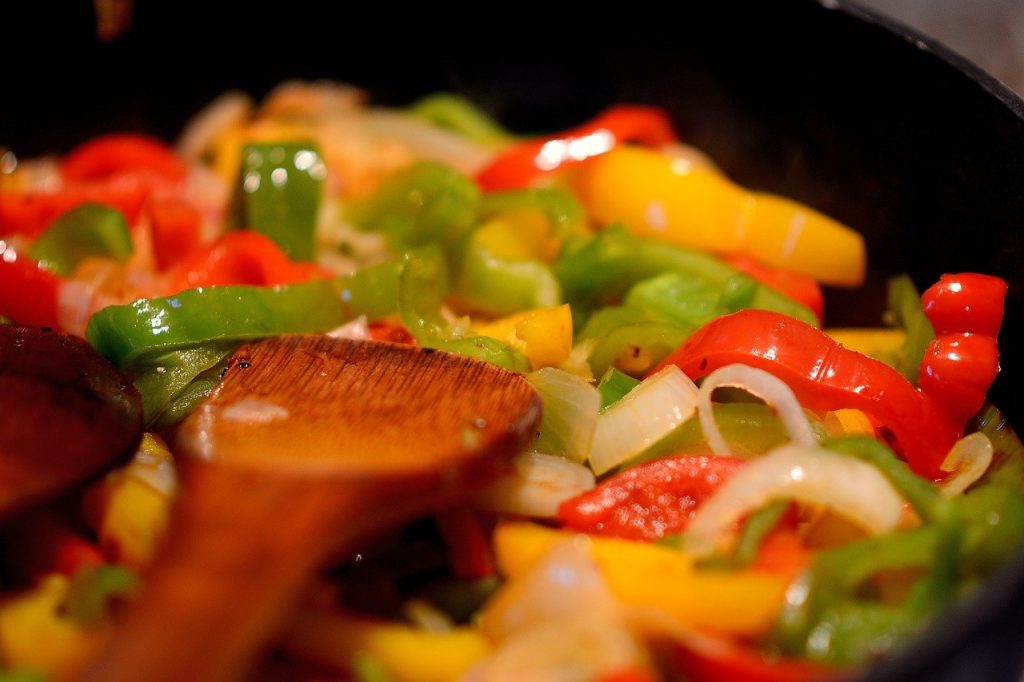 Business case: iKcon
Business case: iKcon
iKcon was established in early 2019 to address the growing demand for food delivery across the GCC and enhance the ability for restaurant and brand owners to be able to reach a significantly larger customer base rapidly within the same city, within the same country and across borders. The company was launched with a vision to become the market leader in cloud kitchens in the region. “iKcon is built to serve restaurant brands that are looking to extend their customer reach at lower capital expenditure, resulting in substantially better return on investment,” Khalid Baareh, co-founder & CEO of iKcon told HN.
The impact of COVID-19
With the burden COVID-19 is causing to customers’ out-of-house activities, including dining out, food delivery is again a main focus for restaurateurs. With this in
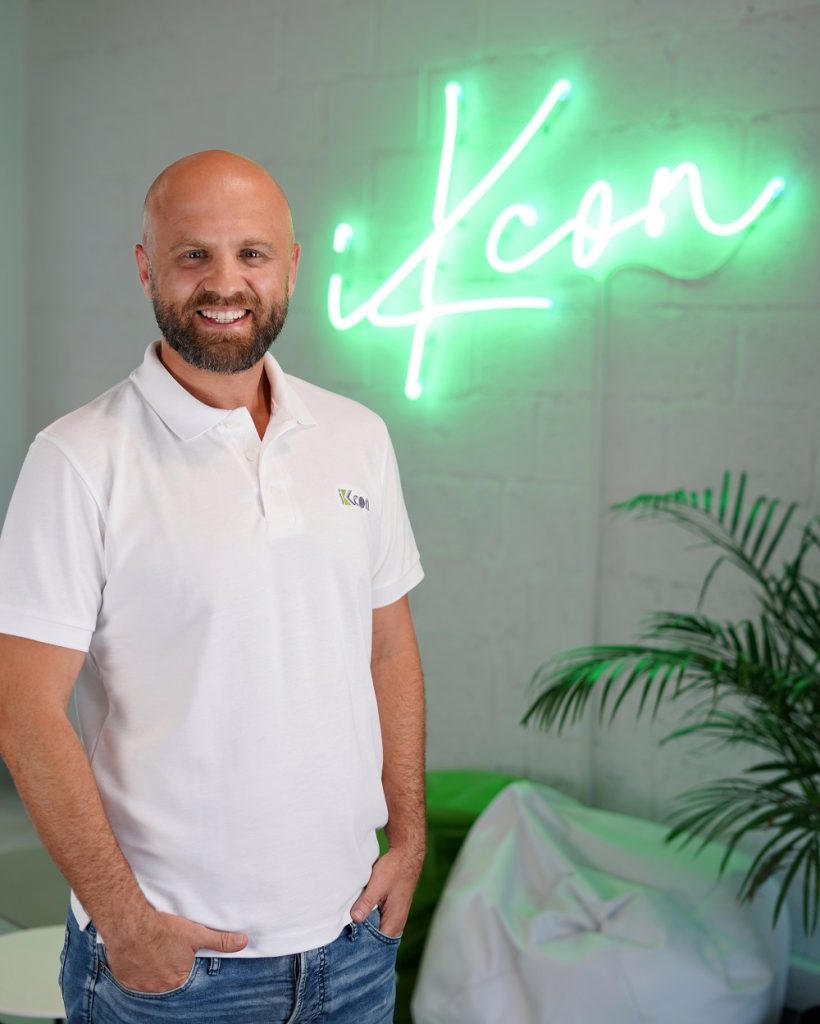
Khalid Baareh
mind, iKcon is supporting established restaurants by significantly extending their customer reach to new locations / areas where they cannot reach. “Our model brings modern and tech advanced service to the F&B landscape. Our technology can efficiently manage the full operation of a diversified portfolio of cuisines from procurement, to receiving the order, to delivery in no time and at minimal cost,” he explained. Speaking about money, iKcon . pays its clients royalties linked to their brand’s monthly sales. “Our clients are well established restaurants, chains, and food entrepreneurs, many having an international presence, with unique and popular ideas / concepts who are looking to extend their reach while maintaining the same level of quality and consistency.”
Challenges and opportunities
Despite the difficult conditions the F&B industry is going through, iKcon is trying to seize the opportunities. “The current market challenges present great opportunities. We managed to recruit top notch talents, onboard excellent brands and secure attractive real estate locations,” Baareh said. The company’s main objective is to keep on innovating. “We are focused on technology and operational excellence, which will be essential as the consumer will have an abundance of brands to choose from and is increasingly relying on technology to save time across multiple facets of their life. This will accelerate the evolution of automation and robotics in the kitchen, similar to how e-commerce fulfillment evolved over the past decade.” he said. He continued: “Data will play a much bigger role in how brands are created and the ability of those brands to adapt quickly to consumer preferences.” He believes that many successful brands from around the world will be able to cross borders much easier and with limited sunk costs
facilitated through iKcon, giving the consumer more choices and the brand a wider global market to target. “The next five years are going to be very exciting and critical transformation years for the F&B market and the consumer and we intend to be the regional leader in cloud kitchens.”
Business case: The Green Junkie
“My story is about starting up a dark kitchen in Beirut where fully serviced restaurants are the mainstream, with the numerous challenges involved, and the “never giving up on your dreams” motto always driving you forth.” This is how Angela Sawan describes her project, The Green Junkie, a dedicated dark kitchen space serving nutritious wholesome meals using only top quality locally sourced ingredients delivered using recyclable food-ware. “The truth is, the concept of a ‘dark kitchen’ isn’t all that new, if you think about it. If you collect food from your favorite local manouche takeout, you’re often faced with a counter that backs onto the kitchen and over where your manouche is being prepped. No tables and no atmosphere,” she explained.
The driver
“The reason behind creating our dark kitchen space is no genius. We would like to think of it as a natural evolution to create a cost efficient business model,” she added. The first professional dark kitchen was established in New York City as a result of the global unfavorable market conditions for bricks and mortar restaurants in the early 2010s and in response to increased demand for high- quality meal delivery and rising rents in city center locations. “Ever since, many more startups have followed suit and as we enter a new decade, dark kitchens are becoming big business, with venture capital pouring into start-ups specifically aiming to take advantage of this new market,” she added.

Angela Sawan
Competition vs classic restaurants
According to her, the benefits of this model are clear, and offer a much needed efficiency boost to restaurant businesses. The elimination of customer seating and waiting areas –which are often underused or even simply vacant – slashes rent costs, and there is no need to employ service staff. “Reducing overheads whilst simultaneously catering to an increased consumer preference towards home delivery appears to be a win win for all concerned.” For The Green Junkie, operating from a dark kitchen enabled them to meet the higher market demands for fast and top quality food. “The way our kitchen is designed in terms of equipment selection and operational flows,
is a dedicated space to be able to prepare, assemble and dispatch the food in less than 15 minutes, making us able to reach the customer within an optimal overall delivery time of 35 minutes.” The concept also allowed them to serve top quality food at affordable price: By operating from the dark space, The Green Junkie was able to invest more in the quality of its ingredients and functionality of its packaging, less in rent/overheads/décor, generating a winning product at a very affordable price. The dark kitchen concept also allowed them to streamline operations. “When choosing our next brand, we make sure that it falls right into our already established flow of operations, meaning streamlining our suppliers and supplies, our equipment, our operational flow,
and our team. This way, with every new concept we add, we make sure that the kitchen’s efficiencies are heightened and the fixed costs such as rent and depreciation are reduced.” Flexibility is at the heart of the concept. “Another crucial value in our dark kitchen lies in our ability to create and change menus quickly and easily to adapt to trends and real time sales figures. Therefore, if it’s pumpkin season? Bam! A pumpkin soup is born and immediately added to the delivery platforms ready to please our guests that appreciate seasonal products.” Despite all the benefits the concept entails, it still faces a few challenges. According to Sawan, one of the most important winning restaurant factors is the vibe and the soul. “Restaurants have vibes, contagious vibes that infect the team with energy and places restaurateurs in direct contact with their customers which grants them live feedback and immediate reactions to anything that might go wrong with food and service. Another thing that goes without saying is that by operating a dark kitchen you miss out on walk in sales and the high markups of drinks
purchases from dine in customers.” Additional challenges include the fewer visibility, the stronger branding and marketing exposure required, as well as the high costs associated with third party delivery apps.
Do it right
To set up a successful dark kitchen concept, the company must ensure its delivery partners (suppliers and apps) deliver excellent service, package your food to ensure it reaches the client fresh and at the right temperature, price the menu right given the contrast in experience between an actual restaurant and having food delivered, and develop the right track to attract new customers and encourage loyalty without a physical presence.
Add to Favorites













